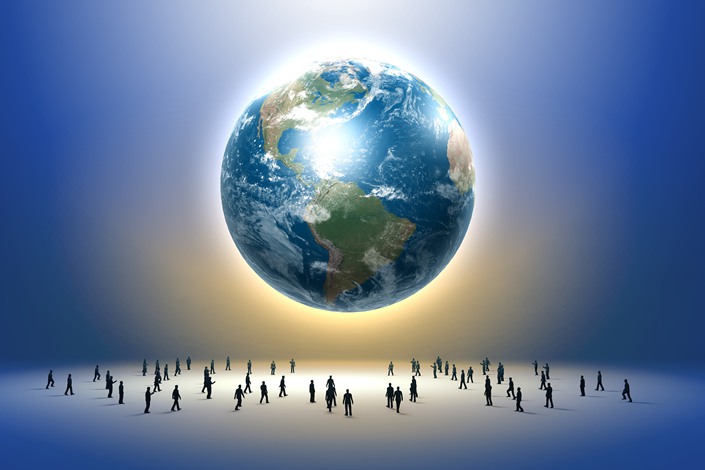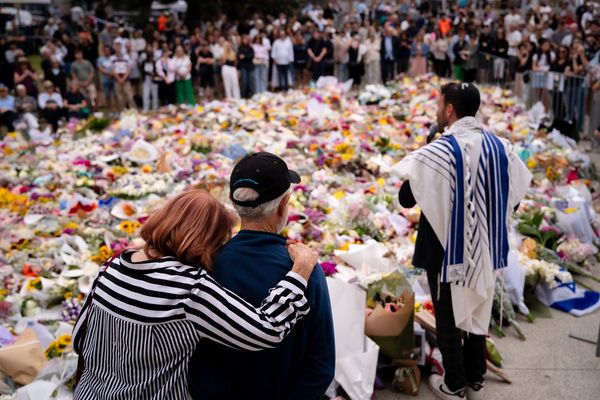
The rapid-fire succession of crises over the past few years — the Covid-19 pandemic, accelerating climate disasters, Russia’s invasion of Ukraine, geopolitical tensions, and a full-blown cost-of-living crisis — feels unprecedented. Yet historical parallels do exist for this type of compressed global upheaval, even if the specifics differ this time around.
My colleagues at the McKinsey Global Institute recently released a fascinating analysis that offers a way to think about what is unfolding today and what may come out of it.
The world has been through clusters of challenging events before. Three distinct and recent eras that stand out are the aftermath of World War II (1944-46), the 1971-73 oil crisis, and the breakup of the Soviet Union (1989-92). Like an earthquake, each of these periods suddenly released powerful underlying forces that permanently changed the landscape going forward.
Critically, each of these episodes changed the rules governing how we understand the world, breaking with what came before. When a new era begins, there is disruption but also an opportunity to capture opportunity or reset certain things for the better. If that is indeed what is happening today, the key question is how quickly we can forge ahead and create progress out of it.
In these past main eras, five major dimensions shifted: the global order, technology, demographics, resources and energy, and capitalization (that is, the drivers of global supply and demand, and the trajectories of finance and wealth). This pattern is repeating again today.
Consider the immediate postwar period. Out of the rubble of World War II came an extended boom that lasted roughly until 1971. At the 1945 Potsdam Conference, the United States officially ended its isolationist policies and assumed a global leadership role. Stalin negotiated the division of Europe and raced to develop the Soviet Union’s nuclear capabilities, resulting in the Cold War standoff. The foundations for the first era, which we call the Postwar Boom, were set.
During this period, the United Nations and Bretton Woods were established, and the U.S. dollar became the de facto global reserve currency, pegged to gold. Economies and societies shifted from wartime mobilization to peacetime reconstruction, creating a period of extended prosperity.
The next major historical parallel era took place from around 1971 to 1989. There was the protracted war in Vietnam and in 1971, then-U.S. President Nixon suddenly suspended the dollar’s convertibility into gold, and the era of fiat money began.
In 1973, as OPEC members sought to leverage their assets, a global oil shock contributed to deep recessions and 15 years of heightened energy costs. Momentum shifted toward the East, as Japan’s GDP surpassed Germany’s. Nixon visited China, breaking a 25-year diplomatic freeze between the two countries.
Then, in the late 1980s, another earthquake happened. The Berlin Wall fell, the Soviet Union collapsed, and Europe’s geopolitical deck was reshuffled. Pro-democracy movements swept across Europe, Asia, and Africa. The Maastricht Treaty was signed in 1992, signaling a leap forward in Europe’s economic and political integration.
The World Wide Web also was born in 1989, creating the scaffolding for the digital revolution. China and India joined the global economy, unlocking the largest reduction in poverty that humanity had ever seen.
This last episode ushered in an age of remarkable progress in health, wealth, and education, along with the deepening of globalization. Overall, people have become much better off. Three decades ago, around 35% of the world’s population lived in extreme poverty; today, that share has dropped to less than 9%.
China alone raised the standard of living of 700 million people — over half its population — to enter the global middle class (spending between $10 – $50 a day). Around the world, the cumulative effect of this improvement in global wealth has been astonishing, and the rules governing it all remained remarkably quite stable — at least until now.
It is impossible to know what will emerge from the turbulence we are experiencing today. We can see certain forces unfolding, but crucial questions remain about how they will play out. At this juncture, the GDP of China has surprised the GDP of the entire European Union put together — China accounts for 18% of global GDP.
The global order is becoming multipolar, but what will that look like in practice? Will the economy remain globalized, and will we find new workable mechanisms for non-economic cooperation? Or are years of relative moderation giving way to harder lines and more confrontation?
With respect to technology, the key drivers of digitization and connectivity appear to be approaching saturation. But a new wave of technologies, including artificial intelligence and biotech, could create another surge of innovation. What impact might they have on work and the social order?
Demographically, the world has gone from rural to urban and from young to graying. How will the world manage the chronic disease burdens of prosperity and old age? At the same time, while inequality across countries is decreasing, inequality within most countries is increasing. This inequality is already straining the social fabric. Will capital and institutions address it, or will the fabric finally tear apart in some societies?
On resources and energy, there is a strong desire to shift toward a lower-carbon economy, but investment is struggling to keep pace with what is required to reach net-zero goals. Can the world find an affordable, resilient, and feasible path to climate stability? What dynamics will play out between those who have critical resources and those who do not?
Finally, economic growth rates appear to be normalizing, but growing leverage could result in full-blown balance-sheet stress. As the old saying goes, history never exactly repeats itself, but it does rhyme. If we are indeed in the early throes of a seismic shift, as these parallels seem to suggest, leaders must prepare to operate in a new world where their old assumptions no longer hold. The past few decades have been ones of significant growth. This next era of potentially slower growth will be a different kind of a challenge. But this doesn’t have to be an ominous prospect. Opportunities will arise to shape whatever comes next — and to be part of the cutting edge when progress inevitably marches on.
Kweilin Ellingrud is a director of the McKinsey Global Institute.
The views and opinions expressed in this opinion section are those of the authors and do not necessarily reflect the editorial positions of Caixin Media.
If you would like to write an opinion for Caixin Global, please send your ideas or finished opinions to our email: opinionen@caixin.com
Get our weekly free Must-Read newsletter.







